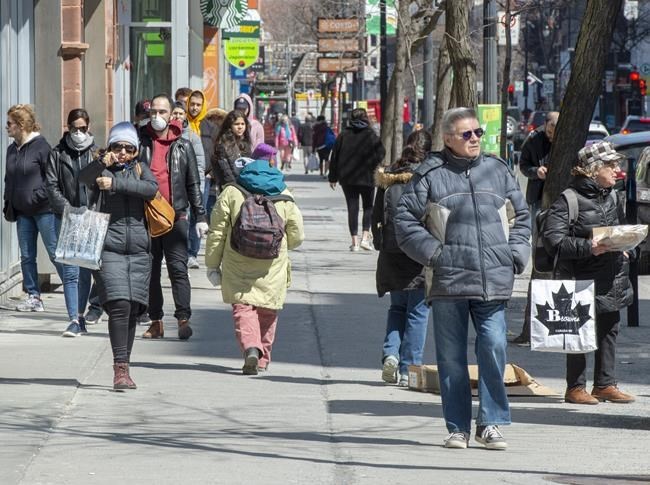OTTAWA — When Kedan Reval moved to Moncton, N.B., just three years ago there was only one Indian food restaurant in town, and few places to find supplies to make the meals he loved from his home country.
Now, only a few years later, Reval said there is a thriving Indo-Canadian community in the city, and all the amenities to boot.
"When I personally saw that Walmart had an Indian section, a South Asian section, it was like tears of joy here," joked Reval, the vice-president of the Indo-Canada Association for the Greater Moncton Area.
The booming number of newcomers means immigrants make up nearly a quarter all people in Canada, and the majority are coming from India, the latest release of 2021 census data shows.
The proportion of immigrants is the largest it's been since Confederation with 23 per cent of the country — or more than 8.3 million people — who were, or had ever been, a landed immigrant or permanent resident.
That's also the highest proportion among G7 countries.
By 2041, Statistics Canada projects as many as 34 per cent of people in Canada will be immigrants.
Statistics Canada says immigration is the main driver of population growth, in part because of the aging population and low fertility rates in the country.
The federal government has committed to bringing in record numbers of people to fill labour shortages, with plans to welcome 431,645 newcomers to Canada this year.
"I think it should come as no surprise that we've embraced immigration as a growth strategy in Canada," Immigration Minister Sean Fraser told reporters Wednesday in Ottawa.
Immigrants accounted for four out of five new workers in the labour force between 2016 and 2021.
Not only that, Fraser said, but immigrants will help pay for schools, hospitals and sustaining basic social services as the Canadian population ages.
Previously, the majority of immigrants to Canada came from Europe, but now most immigrants come from Asia, including the Middle East.
One in five people coming to Canada were born in India, the data shows, making it the top country of birth for recent arrivals.
"The last three years there is tremendous population growth of Indian guys over here and not in only permanent residents, but temporary workers and international students," Reval said of his community.
The last time such a huge proportion of people came from the same place was in the 1971 census, when more than 20 per cent of immigrants came from the United Kingdom.
The overall share of immigrants from Europe has dwindled since then, down to just 10.1 per cent in 2021 from 61.6 per cent in 1971.
The census didn't ask questions about why people from certain regions have chosen to come to Canada, said Tina Chui, director of diversity and socio-cultural statics for Statistics Canada, but other studies do give some clues.
"Joining family, economic opportunities, all those are kind of the reasons why people chose to come to Canada," she said at a press conference Wednesday. The large number of international students from India could also be a factor, she said.
Toronto-based immigration lawyer Peter Rekai said well-educated Indian applicants typically do very well in the express entry system, Canada's main economic immigration program.
The system favours people with a good education, excellent official language proficiency, and work experience in Canada.
"Put it all together and they get enough points to be eligible for this program and also to be competitive," Rekai said in an interview Wednesday.
Many Indian applicants come to Canada under a work or study visa, which gives them a leg up when it comes to their permanent residence application, he said.
The census shows that two-step immigration process is becoming far more common in Canada. More than one-third of immigrants who arrived in the last five years have gone through the two-step process, compared with just 18 per cent of those who were admitted between 2001 and 2005.
Canada offers a level of stability and a relatively short path to permanent residency and citizenship compared to many other countries, making it an attractive destination for newcomers, Rekai said.
"Canada offers a better path and a quicker path … than just about any other country," he said.
All that immigration over recent years means almost one-third of children in Canada have at least one parents who was born abroad, which is up from 26.7 per cent in 2011 and 29.2 per cent in 2016.
The face of Canada is changing, and Reval said multiculturalism is going to play a huge role in Canada's future.
A few years ago he celebrated Diwali in Moncton, one of the most important festivals in the Hinduism, with less than 200 people — most of whom he already knew.
This year, his association plans to throw a sold-out event with more than 600 people in attendance.
"The community is thriving," he said.
This report by The Canadian Press was first published Oct. 26, 2022.
Laura Osman, The Canadian Press




